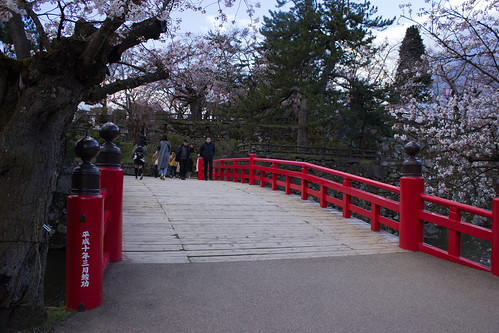PC Function in vivo reendothelialization capacity. 3) Jasplakinolide downregulated the expressions of integrin b1, integrin b3, CXCR4 and SDF-1, but increased eNOS phosphorylation and NO production. 4) NO donor SNP rescued the functional activities of jasplakinolide-stressed late EPCs, but the endothelial NO synthase inhibitor L-NAME led to a further dysfunction induced by jasplakinolide in late EPCs. Several studies have reported that MedChemExpress Aphrodine cytoskeleton alteration induces apoptosis. Furthermore,  the key factor in the actin cytoskeleton’s regulation of apoptosis is dynamic redistribution rather than cleavage. One may speculate that actin stabilization by jasplakinolide might result in cell apoptosis. Odaka et al. found the activation of a caspase-3-like protease or proteases was a key in jasplakinolide-induced cell apoptosis. Posey et al. have also demonstrated that jasplakinolide enhances the apoptosis of CTLL-20 cells in response to IL-2 deprivation. In the present study, it was found that jasplakinolide had no effects on the apoptosis of late EPCs in regular culture condition. This indicated at the concentrations used that jasplakinolide was not toxic to cells, as the percentages of apoptotic late EPCs incubated with VEGF were similar both in the absence and presence of jasplakinolide. As an endothelial cell-specific mitogen and survival factor, VEGF has been shown to exert strong cytoprotective and prosurvival activities. In line with these findings, we found that VEGF deprivation led to the apoptosis of late EPCs, and furthermore that jasplakinolide augmented the apoptosis of late EPCs deprived of VEGF, indicating that the actin stabilization increased the cell sensitivity to cytokine deprivation. Moreover, jasplakinolide appeared to activate the transduction of the apoptotic signal induced by cytokine deprivation, as caspase-3like activity was increased in jasplakinolide treated, VEGF deprived late EPCs. In the mean time, we also observed that jasplakinolide inhibited the cell proliferation in late EPCs, especially in those late EPCs deprived of VEGF. At 12 h, the proliferation activity of late EPCs incubated with jasplakinolide was similar to DMSO-treated cells in the presence of VEGF. However, withdrawal from VEGF led to a decreased proliferation in jasplakinolide treated late EPCs. At 24 h, jasplakinolide inhibited late EPC proliferation in the presence of VEGF, and Jasplakinolide Affects Late EPC Function VEGF deprivation moreover exacerbated the impaired late EPC proliferation due to jasplakinolide. It is well accepted that F-actin is at least in part responsible for shaping cell morphology as well as regulating cell spontaneous migration. Several previous studies have shown that cell migration is impaired as a consequence of F-actin aggregate. Stabilization of actin by jasplakinolide significantly inhibited the migration of late EPCs in the present study. Smadja et al have demonstrated that the migration ability of EPCs may be mediated by an autocrine mechanism involving SDF-1/ CXCR4. It is thus reasonable to presume that the impaired migration of late EPCs induced by jasplakinolide could also be due to reduced SDF-1/CXCR4 expression. Our data indeed show a reduced protein expression of SDF-1 and CXCR4 in late EPCs treated with jasplakinolide, suggesting that the effect of jasplakinolide on late EPC migration may be also mediated by an autocrine mechanism involving SDF-1/CXCR4. Actin remodeling plays an essential role in a variety
the key factor in the actin cytoskeleton’s regulation of apoptosis is dynamic redistribution rather than cleavage. One may speculate that actin stabilization by jasplakinolide might result in cell apoptosis. Odaka et al. found the activation of a caspase-3-like protease or proteases was a key in jasplakinolide-induced cell apoptosis. Posey et al. have also demonstrated that jasplakinolide enhances the apoptosis of CTLL-20 cells in response to IL-2 deprivation. In the present study, it was found that jasplakinolide had no effects on the apoptosis of late EPCs in regular culture condition. This indicated at the concentrations used that jasplakinolide was not toxic to cells, as the percentages of apoptotic late EPCs incubated with VEGF were similar both in the absence and presence of jasplakinolide. As an endothelial cell-specific mitogen and survival factor, VEGF has been shown to exert strong cytoprotective and prosurvival activities. In line with these findings, we found that VEGF deprivation led to the apoptosis of late EPCs, and furthermore that jasplakinolide augmented the apoptosis of late EPCs deprived of VEGF, indicating that the actin stabilization increased the cell sensitivity to cytokine deprivation. Moreover, jasplakinolide appeared to activate the transduction of the apoptotic signal induced by cytokine deprivation, as caspase-3like activity was increased in jasplakinolide treated, VEGF deprived late EPCs. In the mean time, we also observed that jasplakinolide inhibited the cell proliferation in late EPCs, especially in those late EPCs deprived of VEGF. At 12 h, the proliferation activity of late EPCs incubated with jasplakinolide was similar to DMSO-treated cells in the presence of VEGF. However, withdrawal from VEGF led to a decreased proliferation in jasplakinolide treated late EPCs. At 24 h, jasplakinolide inhibited late EPC proliferation in the presence of VEGF, and Jasplakinolide Affects Late EPC Function VEGF deprivation moreover exacerbated the impaired late EPC proliferation due to jasplakinolide. It is well accepted that F-actin is at least in part responsible for shaping cell morphology as well as regulating cell spontaneous migration. Several previous studies have shown that cell migration is impaired as a consequence of F-actin aggregate. Stabilization of actin by jasplakinolide significantly inhibited the migration of late EPCs in the present study. Smadja et al have demonstrated that the migration ability of EPCs may be mediated by an autocrine mechanism involving SDF-1/ CXCR4. It is thus reasonable to presume that the impaired migration of late EPCs induced by jasplakinolide could also be due to reduced SDF-1/CXCR4 expression. Our data indeed show a reduced protein expression of SDF-1 and CXCR4 in late EPCs treated with jasplakinolide, suggesting that the effect of jasplakinolide on late EPC migration may be also mediated by an autocrine mechanism involving SDF-1/CXCR4. Actin remodeling plays an essential role in a variety